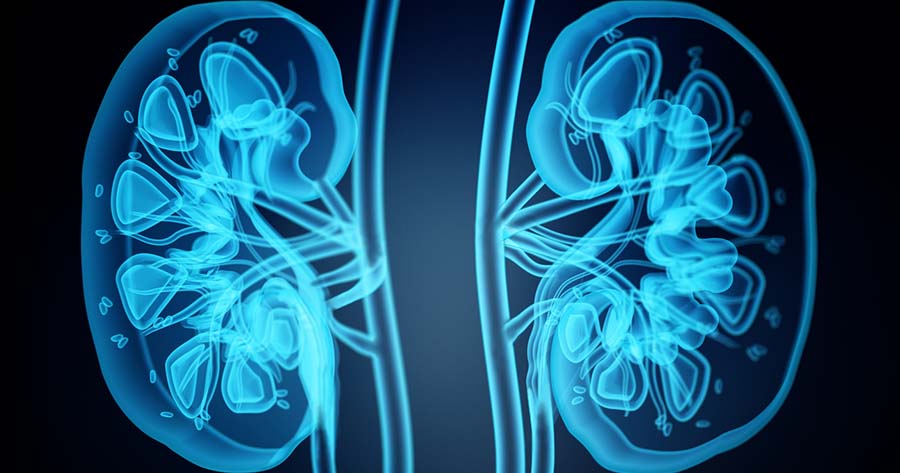In this last article in a six-part series on research for nurses working in diabetes, the author concludes by discussing an important way of sharing information and contributing to evidence-based practice, that is publishing research articles in peer-reviewed journals. At some time most healthcare professionals will face the joy, and challenge, of writing an article. Such articles might be an adaptation of an assignment, an audit, evaluation or research report, a critique of existing research, or an opinion piece.
The aim should be to write a “good article” worthy of publishing. The following points are key aspects of a good article. It should:
- Be interesting, topical or thought-provoking.
- Be focused.
- Be original, or present a unique point of view.
- Be well written.
- Follow relevant author guidelines.
- Not be published before.
A good article is the result of a planned process. It demonstrates the author(s)’ knowledge of the topic, their ability to think critically, reflect on and discuss the issues they raise and to write clearly and logically using good grammar. Good writing is a form of communication between the writer and the readers; it encompasses sentence construction, grammar, word choice and structure of the information so that it flows in a logical way.
The actual writing process can be divided into the following key stages:
- Preparing to write the article.
- Writing the article: most authors write several drafts before they submit their article to a journal for consideration for publication.
- Submitting the article.
- Responding to reviewers’ recommendations (which the journal editor sends to the corresponding author) and resubmitting the article with any revisions required.
Preparing to write the article
It is useful to develop a publication plan. This step often occurs early, for example when a study or literature review is being planned.
Clearly define the focus of the article
If the focus is clear, the article will be easier to write. (Of note, the focus of the article is not the same thing as the aim of the study.) If you are converting an assignment, research report or thesis into an article you need to select only the information that relates to the focus of the article. A mind map (see http://bit.ly/mdF88j) can be a useful way to decide the focus of the article and help you decide:
- What you want to say.
- Whom you want to say it to.
- Why you want to say it.
Decide who the authors will be
The International Committee of Medical Journal Editors’ determinants of authorship are outlined in Table 1.
Select a journal suited to the message you wish to convey and the readership you hope to influence
Journals that are listed in established electronic databases such as MEDLINE, PubMed and CINAHL are more likely to be retrieved and read. If you have an idea for an article but you are not sure whether it is appropriate for a particular journal, contact the editor and discuss your idea with him or her. In addition, you could read articles published in the target journal to get a feel for the types of articles it publishes, the language used and the format.
Set a realistic time frame for completing your article
Writing an article, especially if you are new to this, can take longer than you think. Expect to write several drafts before submitting your article and be prepared to delete information that is not relevant to the focus of the article. Ask somebody who is not involved in writing the article to read it and give feedback.
Writing your article
Good writing
Good writing is easy to understand and the information flows logically from the beginning to the end of the article (Dixon, 2001). Use active language rather than passive language, which consists of long, tortuous phrases (weasel words), creates ambiguity and “wastes” words.
Obtain a copy of the author guidelines and follow them. Articles are often rejected because they do not suit the journal and/or the authors did not adhere to the author guidelines (Day, 2006). In addition, following author guidelines will reduce the amount of revision required later. Author guidelines provide information such as word limits, general layout and format, referencing styles and the submission process.
Main sections of an article
The main sections of an article are outlined in Table 2. Each section must be complete in itself, but there should also be logical flow from sentence-to-sentence, paragraph-to-paragraph and section-to-section. Include a sentence or phrase at the end of each section to inform the reader what the next section is about – sometimes referred to as “signposting”.
Title
Choose the title carefully. It should clearly and succinctly tell readers what the article is about (the focus). The title should convey the key message, usually in up to 20 words.
Abstract
The abstract is a brief (approximately 200–300 words), accurate summary of the key aspects of the article. Readers often use the abstract to decide whether or not to read the full article. The abstract can be written first and serve as the framework for the article or it can be prepared after the body of the article is completed.
Key words
Key words help readers identify your article when they search electronic databases for information. Therefore, they are an important part of the article and should relate to the focus of the article. Usually about five key words are required; this may differ from journal to journal so be sure to check the author guidelines.
Background/introduction
The background or introduction introduces the reader to the topic, your reasons for writing about the topic and the focus of the article. This section is usually brief, about one to two paragraphs. Sometimes, the background is incorporated into the literature review.
Literature review
The aim of the literature review is to demonstrate you are familiar with important work in the area. This section should not read like “he said and she said”. The purpose of the literature review is to discuss key articles about the topic (i.e. what is already known), their strengths and limitations and how the articles relate to your work. The reader needs to be able to make their own decisions about the articles you cite, therefore key information, such as the sampling population, the sampling procedure, sample size, and key findings, should be included.
Aim(s)
The study aim(s), hypothesis or research question can be presented at the end of the literature review, under a separate subheading or at the beginning of the methods section. The aim must be clearly stated. It is the most significant part of a research article because it provides a framework for the method (the aim drives the method), the results/findings and the conclusion.
Method
The method must be clearly and logically described. A flow chart can be helpful to readers if the method is complicated. The method is the recipe for the study. It describes what you did and usually encompasses information about:
- The sampling population – the group of people from whom you selected your sample.
- Inclusion and exclusion criteria.
- The sample selection process.
- Sample size and justification of the sample size (e.g. a power calculation for qualitative studies).
- Data collection processes and tools, including information about their validity and reliability.
- Data analysis techniques.
- Ethical issues and approval, where necessary.
Results/findings
This section describes what you found. Tables and figures can reduce the word length, succinctly present important information and enhance the results; but they should not repeat information presented in the text. Captions and legends should explain the table/figure so that it can be read and understood independently from the text. They must be called out in the text.
Discussion
The discussion is an important section of the article in which you compare your findings with the literature, point out similarities and differences, suggest reasons for similarities/differences, describe why your study is important and what it contributes to the literature. The discussion should not be a restatement of the results.
Strengths and limitations
The strengths and limitations of the study need to be described and explained.
Conclusion
Conclusions must be succinct and relate to the study aim. Some journals also ask authors to suggest implications for practice and topics for future study.
References
All the references cited in the article should be listed in the references. Make sure the dates and spellings are correct and are the same in the text as in the reference list. Double-check the reference sources to ensure the use of primary references as much as possible. The reference list also provides a useful resource for further reading for readers.
Check that you have cited the appropriate reference for the point you are making, especially when you cite widely published authors and when you select your references from an electronic reference management system such as Reference Manager.
Make sure you follow the reference style described in the author guidelines accurately. This may often include a reference limit; it is not helpful to sprinkle references around like confetti.
Additional information
Other sections that are sometimes required include acknowledgements, declaration of conflict of interest, a statement about the contribution of each author to the work, suggestions of implications for practice and ideas for further study.
Submitting your article to a journal
You can only submit your article to one journal at a time. Be sure to follow the journal’s guidelines for writing and submitting an article. Currently, most journals require online submission and an accompanying letter stating that the article has not been previously published and has not been submitted to any other journal.
Nominate one author to be the corresponding author. This is the person with whom the journal editor will correspond with. Usually the editor will notify the corresponding author that he or she has received the article.
It generally takes approximately 1–2 months for the peer-review process to be completed; this information should be stated in the author guidelines. The editor will send the article to two or three reviewers who advise the editor about the suitability, quality and scientific merit of the article and recommend:
- Publishing the article as it is (very rare).
- Publishing the article subject to specified amendments being made and resubmitting the article.
- Rejecting the article.
Responding to reviewers’ recommendations
The editor will communicate the decision and the reviewers’ suggestions to the corresponding author. Do not be discouraged by the reviewers’ comments, they almost always improve your article. The author(s) then need to respond to the reviewers’ feedback by making the suggested changes or justifying why the changes were not made. When responding to the editor, the author must itemise how they have addressed each point raised by the reviewers in a letter, make the relevant changes in the manuscript and resubmit it by the date the editor specified.
If your article is accepted for publication the authors will most likely be required to assign copyright to the journal. In most cases, all authors are required to sign a copyright form.
Once the article is accepted, it can take a while before it is published. At this time, you can include it on your CV, with the citation stating “accepted for publication on XX (date)”. Once you have received the proofs for corrections/approval you can amend the wording to “in press”. Then, upon publication, the full reference can be cited.
Conclusion
Writing and publishing articles can be daunting, but it is satisfying and becomes easier with experience. It might even become an addiction. This article, along with the previous five in this research series, will help nurses working in diabetes learn the essentials for writing a good research article.





NHS England to allow weight-loss injections for prioritised patient cohorts from late June.
5 Apr 2025